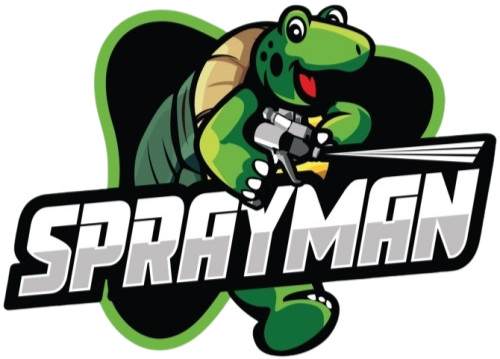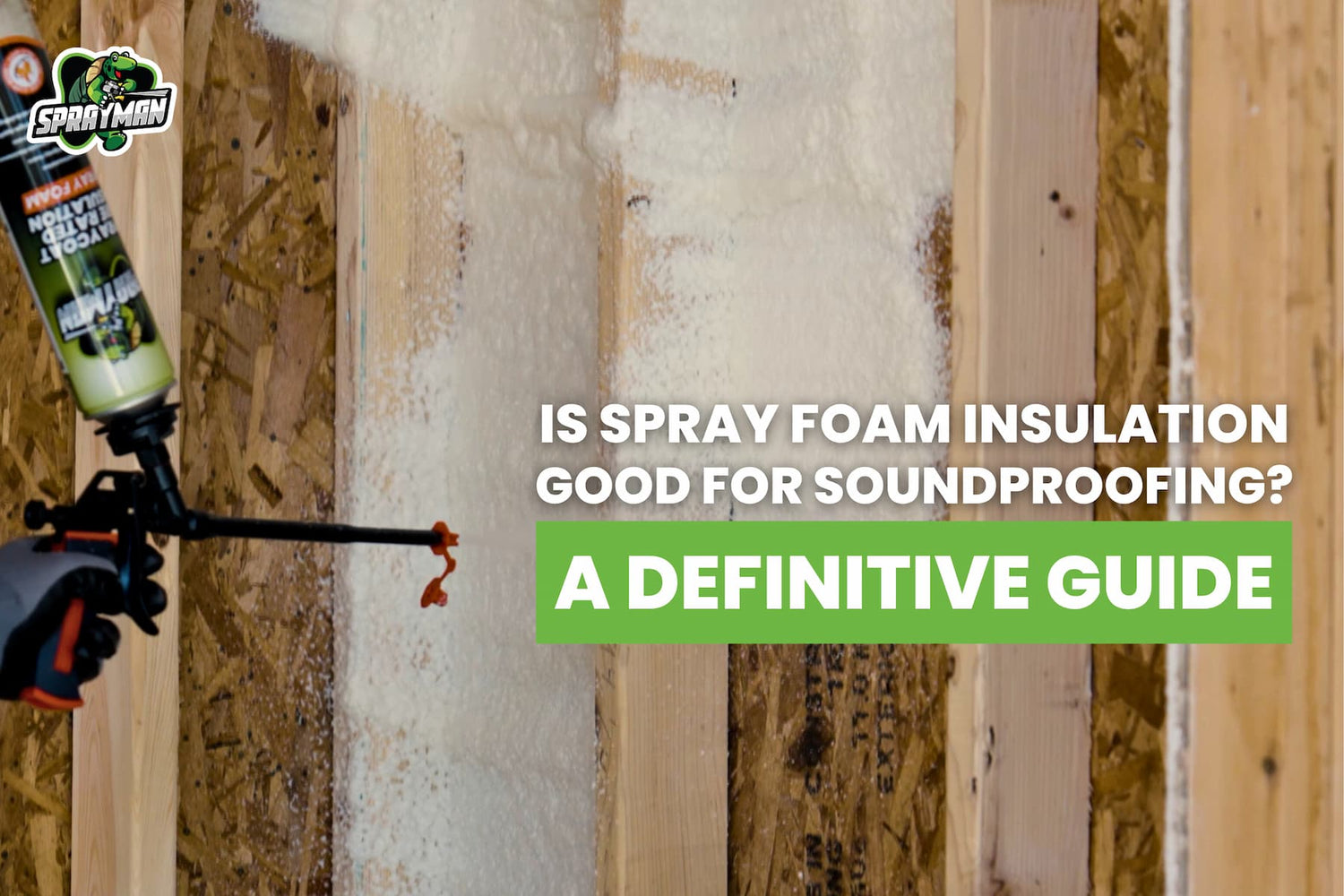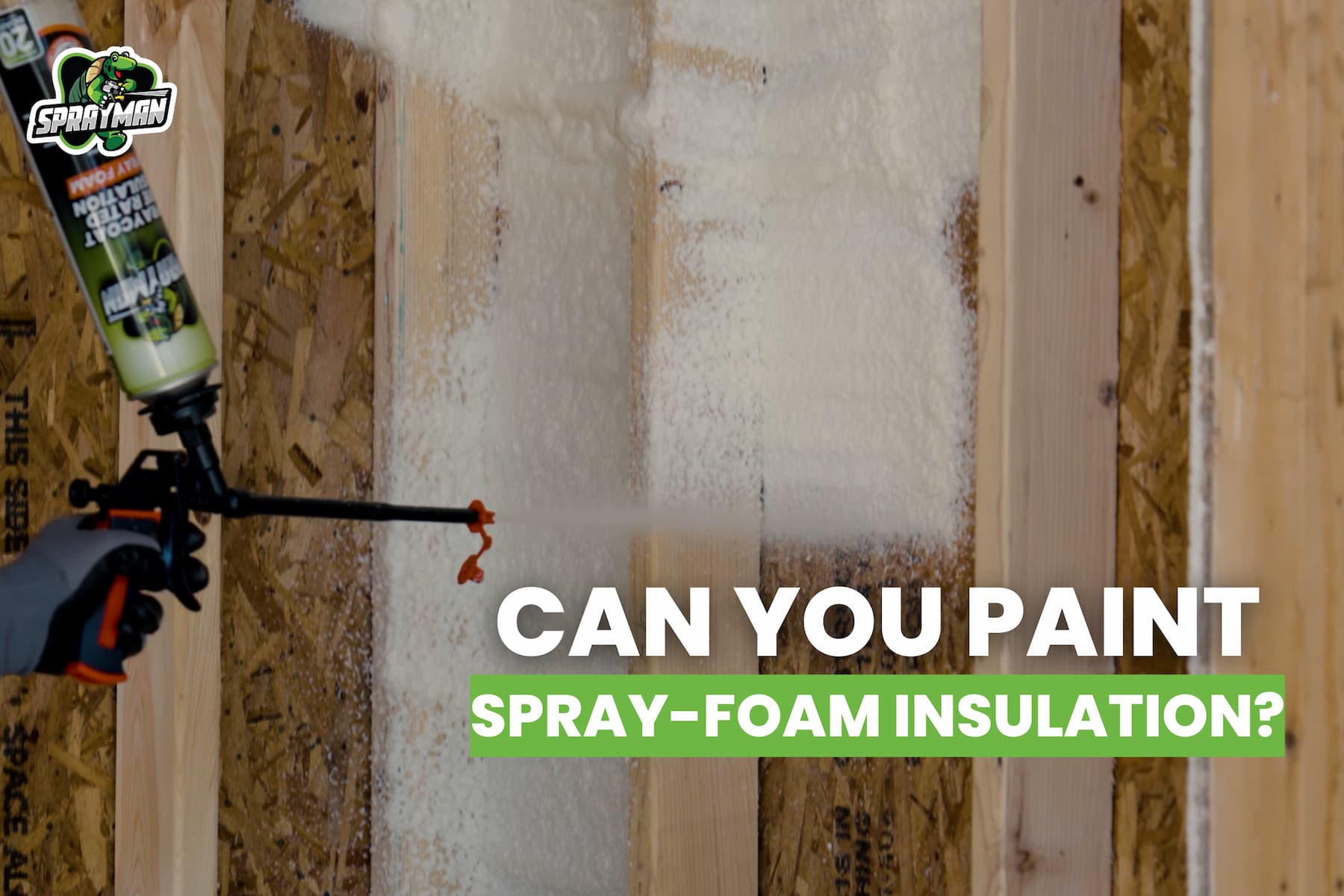Annoyance from a neighbor's barking dog, the steady hum of city traffic, or the television in the next room can erode your home's comfort. Many homeowners discover that standard insulation materials often fail to address noise issues, prompting them to explore various soundproofing solutions. While some apply temporary fixes or attempt DIY approaches, these methods rarely deliver lasting results. Soundproofing spray foam offers a comprehensive solution that tackles both energy efficiency and acoustic comfort simultaneously.
Before purchasing separate materials for different problems, this guide will help you understand exactly how spray foam works and why it represents the most effective way to insulate your home for both thermal performance and genuine peace and quiet.

What Makes Spray Foam Different for Noise Control?
Unlike traditional insulation materials, spray foam expands inside wall, floor, and ceiling cavities to fill every gap and crevice, bonding directly to wood, metal, and concrete. This continuous seal blocks the air pathways that carry sound, so builders often select the material when both acoustic comfort and energy performance are goals. With expansion often rising to many times the original liquid volume, no space remains unsealed.
How Does Spray Foam Reduce Unwanted Noise?
Spray foam sound insulation limits noise by combining a tight air seal with internal absorption.
- Air‑seal barrier: The liquid expands many times its original volume, filling every crack around pipes, wires, and framing. By closing the air path, it removes the simplest route for outdoor traffic and room‑to‑room chatter.
- Cellular absorption: Within the cured foam, tiny air pockets function as cushions. When waves strike, friction in those pockets converts a portion of the pressure into heat, creating an effective sound-absorbing spray foam that reduces the noise reaching the other side.
This twin-action function works in walls, attics, basements, and even narrow window gaps, cutting noise while improving energy efficiency; clear proof that spray foam is effective for soundproofing.

Which Spray Foam Type Works Best for Soundproofing?
Open-cell spray foam is generally the best choice for soundproofing because its porous, flexible structure traps and dampens sound waves more effectively than the denser closed-cell variety. Closed-cell foam still helps reduce low-frequency vibration and adds thermal and moisture benefits, but for pure acoustic absorption, open-cell outperforms.
A side-by-side table below highlights the differences between open-cell and closed-cell spray foam at a glance:
|
Feature |
Open-Cell Spray Foam |
Closed-Cell Spray Foam |
|
Cell structure |
Partially open cells, soft and flexible |
Fully closed cells; dense and rigid |
|
Porosity |
High–porous matrix traps sound waves |
Low – limited porosity, less effective at trapping sound |
|
Primary acoustic trait |
Excellent absorption of mid- and high-frequency noise |
Good blocking reduces transmission of sound waves, especially lower frequencies |
|
Typical R-value (per inch) |
Lower |
Higher |
|
Extra benefit |
Expands widely to fill cavities |
Acts as a strong moisture and air barrier |
Taken together, the features listed above make open-cell spray foam the best choice for soundproofing typical interior walls and rooms.
What Extra Advantages Come With Spray Foam Insulation?
Beyond sound control, spray foam offers several additional benefits for everyday comfort and efficiency:
- Energy savings: The same seal that reduces noise also prevents uncontrolled air exchange, thereby trimming HVAC run time and utility bills by 15–30 percent.
- Moisture control: Closed‑cell layers form a vapor retarder that guards framing from condensation in humid or mixed climates.
- Cleaner indoor air: A tight envelope lowers dust, pollen, and exhaust infiltration, supporting healthier interiors.

For a comprehensive breakdown of these efficiency gains and additional value-adding features, explore our detailed guide titled "Top 6 Key Benefits of Spray Foam Insulation for Enhanced Efficiency and Value".
The Verdict: Is Spray Foam a Smart Choice for Soundproofing?
Yes. When the goal is to reduce noise from outside or between rooms, spray foam insulation stands out as one of the most effective investments. It delivers exceptional sound reduction while also providing superior thermal insulation and other advantages that create a more comfortable, energy-efficient, and healthy living environment.
Take control of your environment with a product engineered for superior performance. Discover the Class A Fire-Rated protection and powerful sound-blocking capabilities of the SPRAYMAN Spraycoat Thermal & Sound Insulation Spray Foam now.
Frequently Asked Questions
Can spray foam be installed in existing homes, or is it only for new construction?
Yes. Retrofit or injection methods allow installers to drill small holes in finished walls, inject foam into cavities, and patch the openings. The process is minimally invasive and delivers the same acoustic and thermal benefits as new-build applications.
Is spray foam insulation a fire hazard?
SPRAYMAN’s closed-cell foam contains fire retardants and meets Class A requirements (the highest rating recognized in building codes) for flame spread and smoke development. Compliance with local codes still requires an approved thermal or ignition barrier, such as drywall, over exposed foam.
How long does spray foam insulation last?
Properly installed spray foam remains stable for the life of the building. It resists sagging, settling, and degradation, maintaining insulating and sound-damping performance without the need for replacement.
Is professional installation better than using a DIY spray foam kit?
Professional crews operate calibrated equipment, control chemical ratios, and follow safety protocols, resulting in consistent density and full cavity coverage. DIY kits suit small projects but may produce uneven expansion or reduced performance if the temperature, mixing, or spray technique is off.
Does spray foam sound insulation require an additional vapor barrier?
Closed-cell spray foam already functions as a vapor retarder and typically needs no extra layer. Open-cell foam is vapor-permeable; in high-humidity or mixed climates, a dedicated vapor barrier may be specified on the warm side of the assembly.




Leave a comment
This site is protected by hCaptcha and the hCaptcha Privacy Policy and Terms of Service apply.